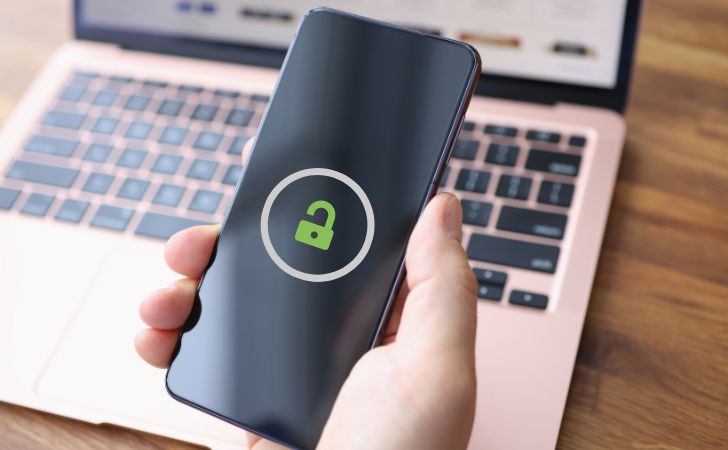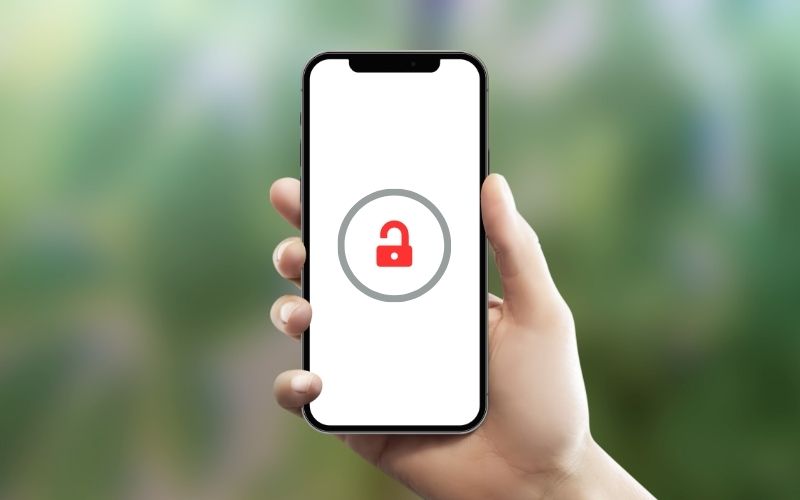In today’s globalized world, mobile phones have become an essential part of our lives. They connect us to loved ones, provide access to information, and facilitate business operations. However, these devices often come with restrictions that can limit their functionality and flexibility. One such restriction is carrier lock, which binds your phone to a specific network operator. This means you can only use your phone’s services with that particular carrier.
This guide aims to equip you with the knowledge and tools to navigate the world of carrier unlocking. By exploring the concept of carrier lock, the CTIA Commitment, and the various unlocking methods available, you can unlock your phone’s full potential and gain greater freedom in choosing your network provider.
What is Carrier Lock and Why Does it Exist?
Imagine your phone as a cagebird, its network the cage. Carrier locking restricts your phone to the specific network you purchased it from, limiting your options and flexibility. This is usually done by software embedded in your phone, preventing it from recognizing SIM cards from other networks.
Carrier unlocking, on the other hand, is like granting your phone wings. It removes the software restrictions, enabling your phone to accept and function with SIM cards from any compatible network. This opens up a world of possibilities, including:
- Switching carriers: Take advantage of better deals, wider coverage, or lower roaming charges by switching to a different network.
- Traveling abroad: Use local SIM cards for cheaper rates and data access when traveling.
- Selling your phone: Unlocked phones generally command a higher resale value.
- Freedom of choice: No longer be tied to a single carrier and explore the options available to you.
Carrier Unlocking Methods
Now that you understand the benefits, let’s explore the different ways to unlock your phone:
1. Official Carrier Unlock
- Contact your carrier: Most carriers offer official unlocking services, usually after fulfilling certain requirements like completing your contract or paying off your device.
- Provide required information: Carriers typically ask for your phone’s IMEI number, account information, and proof of purchase.
- Wait for processing: Approval times vary based on the carrier, but it can take up to a few days or weeks.
- Receive unlock code or instructions: Once approved, your carrier will provide you with an unlock code or specific instructions to unlock your phone.
2. Third-Party Unlocking Services
- Independent companies: Numerous online services specialize in unlocking phones. These services often require a fee and may use different methods depending on your phone model and carrier.
- IMEI-based unlocking: These services utilize your phone’s IMEI number to generate an unlock code. While convenient, they may not be available for all phones or carriers.
- Software unlocking: Some services offer software solutions that modify your phone’s firmware to remove the unlock restrictions. This method can be risky and may void your warranty.
3. Unlocking Apps
- Caution: While some apps claim to unlock your phone, they often come with security risks or hidden fees. Exercise caution and thoroughly research any app before using it.
Step-by-Step Guide Unlock your Mobile Phone
1. Check your phone’s eligibility
- Contact your carrier: Ask them directly if your phone is eligible for unlocking and what their specific requirements are.
- Check your phone’s settings: Some phones have an unlock option in the settings menu.
- Use online resources: Websites like IMEI.info can help you determine your phone’s carrier lock status.
2. Choose your unlocking method
- Official Carrier Unlock: This is the safest and most reliable method, but it may take longer and require fulfilling certain requirements.
- Third-Party Unlocking Services: Consider this option if your carrier is slow or has restrictions. Research reputable services and compare prices before proceeding.
- Unlocking Apps: Only use reputable apps from trusted sources and proceed with caution.
3. Follow the specific instructions
- Official Carrier Unlock: Follow your carrier’s instructions to submit your request and receive the unlock code.
- Third-Party Unlocking Services: Each service will have its own specific instructions. Follow them carefully to ensure successful unlocking.
- Unlocking Apps: Carefully read the app’s instructions and ensure you understand the risks involved.
4. Unlock your phone
- Once you receive the unlock code: Insert a non-native SIM card and enter the code when prompted.
- For software unlocking: Follow the specific instructions provided by the service to modify your phone’s software.
5. Verify successful unlocking
- Try using your phone with the new SIM card: Make calls, send texts, and browse the internet to confirm successful unlocking.
- Contact your carrier if you encounter any issues: They may be able to assist you further.
Important Considerations
- Unlocking legality: Ensure carrier unlocking is legal in your country.
- Warranty: Unlocking your phone may void its warranty, especially if using unofficial methods.
- Risks: Be wary of scams and unreliable unlocking services.
What is the CTIA Commitment?
The CTIA (Cellular Telecommunications & Internet Association) is the leading organization representing the wireless communications industry in the United States. Beyond advocacy and lobbying, CTIA also spearheads various initiatives aimed at enhancing the industry’s impact and shaping its future. These initiatives, collectively known as the CTIA Commitments, address critical aspects like consumer protection, technology development, and inclusivity.
Here’s an overview of some key CTIA Commitments
1. Consumer Code for Wireless Service
This code establishes a set of voluntary principles, disclosures, and practices that wireless service providers adhere to. It aims to ensure transparency, fairness, and customer protection in areas like billing, contracts, and customer service.
2. Smartphone Anti-Theft Voluntary Commitment
Recognizing the rising concern over smartphone theft, CTIA members committed to making readily available anti-theft solutions on new smartphones. This allows users to remotely disable their phones in case of loss or theft, protecting their data and privacy.
3. Connecting Us: The Wireless Industry Commitment to Diversity, Equity, and Inclusion
This initiative focuses on fostering diversity and creating equitable opportunities within the wireless industry. It includes promoting STEM education, supporting diverse suppliers, and investing in initiatives that uplift underrepresented communities.
4. 5G for All
This commitment emphasizes bridging the digital divide by expanding 5G access and affordability. It involves working with policymakers and stakeholders to ensure everyone has access to the benefits of next-generation wireless technology.
5. Protecting Kids Online
This initiative aims to protect children from online threats and promote responsible use of mobile technology. CTIA collaborates with parents, policymakers, and other organizations to develop educational resources and safety features.
6. Public Safety and Emergency Communications
CTIA members commit to supporting first responders and ensuring reliable emergency communication networks. This includes advocating for policies that enhance emergency communication infrastructure and developing innovative solutions for disaster response.
7. Environmental Sustainability
Recognizing the environmental impact of the wireless industry, CTIA is committed to promoting sustainable practices. This includes initiatives like energy efficiency, recycling, and responsible disposal of electronic waste.
8. Cybersecurity and Privacy
With increasing reliance on mobile technology, CTIA emphasizes robust cybersecurity measures and data privacy protection. Members collaborate to develop industry standards and best practices to safeguard user data and combat cyber threats.
9. Accessibility
CTIA is committed to making wireless technology accessible to everyone, including people with disabilities. This includes developing accessible devices, services, and features that ensure inclusivity and equal participation in the digital world.
10. Innovation and Investment
CTIA continues to drive innovation and encourage investment in the wireless industry. This includes supporting research and development of new technologies, promoting entrepreneurship, and fostering a vibrant ecosystem for the future of wireless communications.
Overall, the CTIA Commitments represent a comprehensive framework for shaping the future of the wireless industry. By focusing on consumer protection, technology development, inclusivity, and responsible practices, CTIA strives to create a wireless ecosystem that benefits all stakeholders.
Conclusion
Understanding carrier lock and the CTIA Commitment empowers you to make informed decisions about your phone. By following the step-by-step guide and choosing the appropriate unlocking method, you can unlock your phone’s full potential and enjoy greater freedom in choosing your network provider.
Frequently Asked Questions (FAQ)
A SIM unlock allows you to use your phone with any SIM card, regardless of the carrier. A carrier unlock removes the software restriction that binds your phone to a specific network. In essence, a carrier unlock includes a SIM unlock.
Under the CTIA Commitment in the US, carriers must unlock eligible phones upon request and for free. However, some carriers may charge a processing fee. In other countries, unlocking policies and fees may vary.
In the US, the Unloclking Consumer Choice and Wireless Competition Act requires carriers to unlock eligible phones upon request. This law is not applicable in all countries.
Yes, you can unlock your phone yourself using one of the methods mentioned above. However, the process can be complex, and technical knowledge might be required.
No, SIM lock and carrier lock are not the same. A SIM lock prevents you from using any other SIM card besides the one provided by your carrier. A carrier lock restricts your phone to a specific network, regardless of the SIM card used.
No, most SIM cards are not locked to a specific carrier. However, some prepaid SIM cards may be locked to the carrier they are purchased from.
If you buy a carrier-locked phone, you can only use it with the network it is locked to. You will need to unlock it to use it with other carriers.
No, it is legal to carrier unlock an iPhone in most countries. However, it is important to ensure you are using a legitimate method and not violating any terms of service.
In most cases, you will need more information than just the IMEI number to unlock your phone. This may include your phone model, carrier, and account details.

